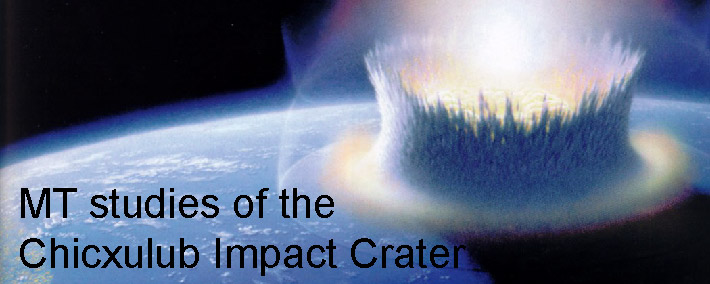

|
The Chicxulub Impact crater in Mexico dates from the Cretaceous-Tertiary (KT) boundary and may have played a role in the mass extinction at that time. It is the best preserved of the three large impact craters on Earth and gives a unique opportunity to study the subsurface structure of these features. In collaboration with Dr. Oscar Campos of the Instituto de Geofisica at UNAM, broadband MT data were collected on 2 radial profiles in January-February 2001. Figures below are from Unsworth et al., GRL, 2002 and Campos et al., GJI, 2004. The MT data image the post-impact sediments as a low resistivity layer some 2 km thick (red). Resolution in the basement rocks is reduced by the surface conductor, but systematic variations can be seen on both profiles. Between radial distances of 10-30 km the high resistivity zone is the central uplift. The low resistivities between 30-70 km may be due to fractured and altered basement rocks. This research was funded in the United States National Science Foundation (Geophysics) and in Mexico CONICYT.
Back to the Tectonics research page
|